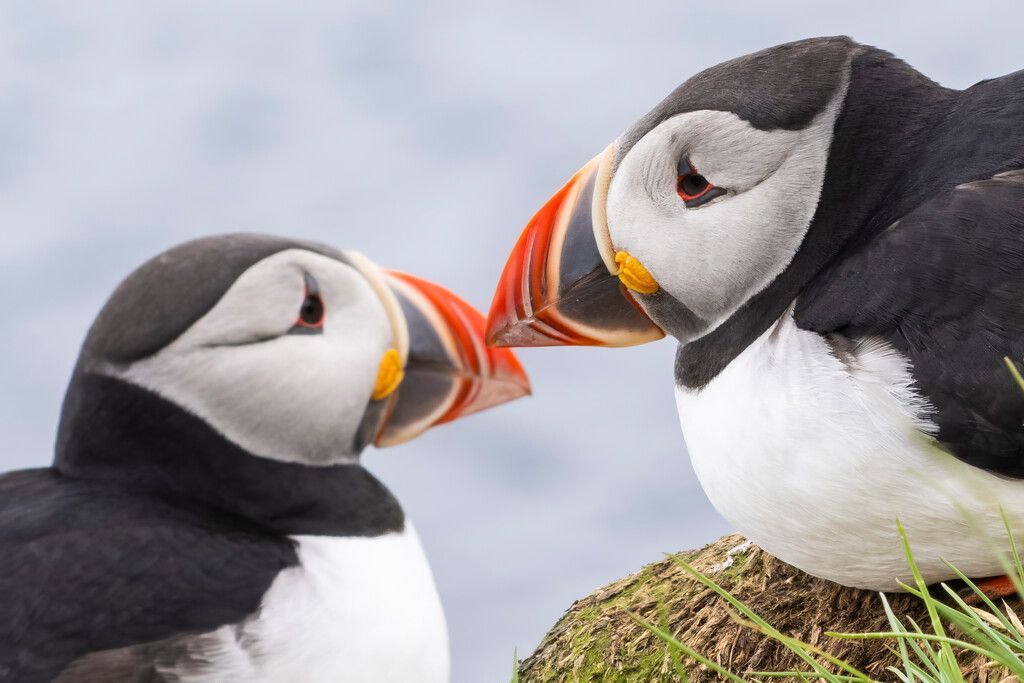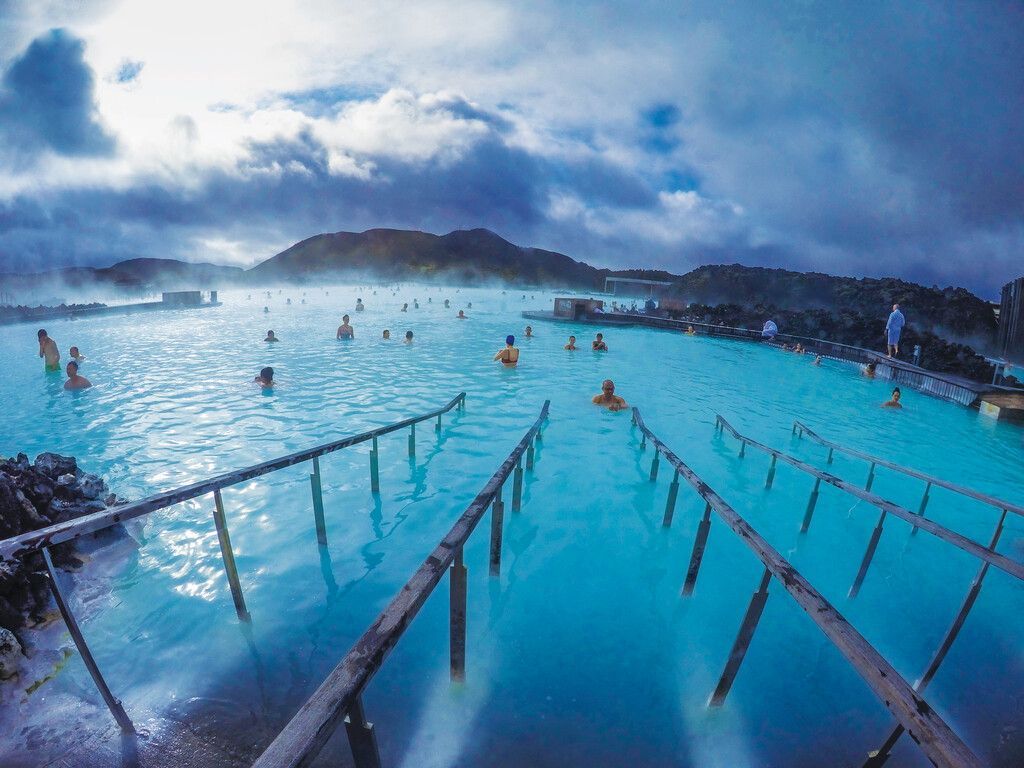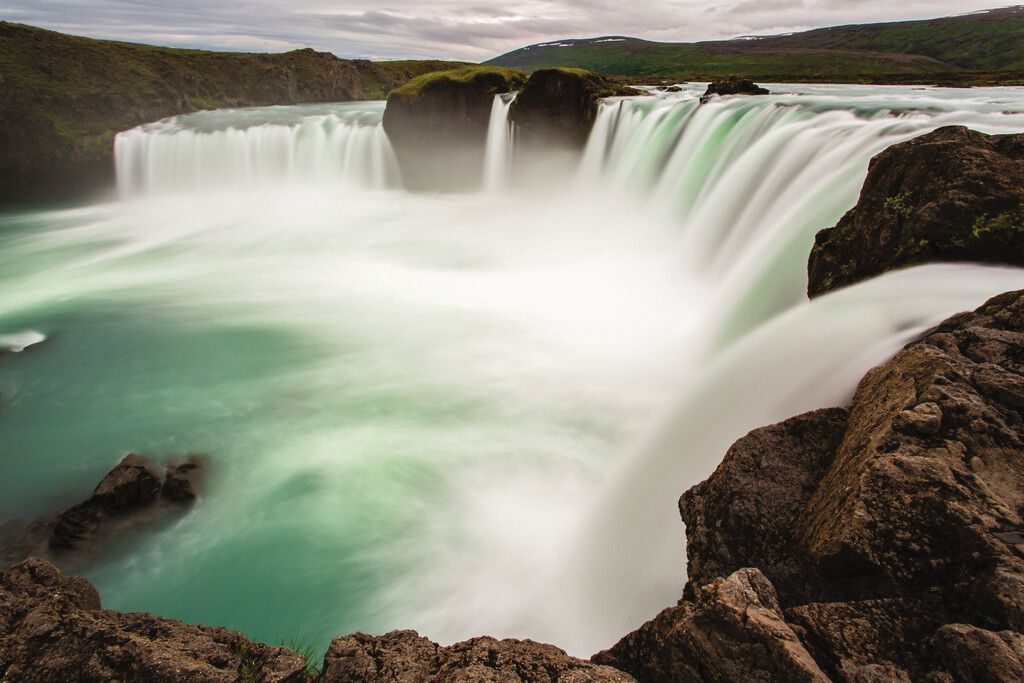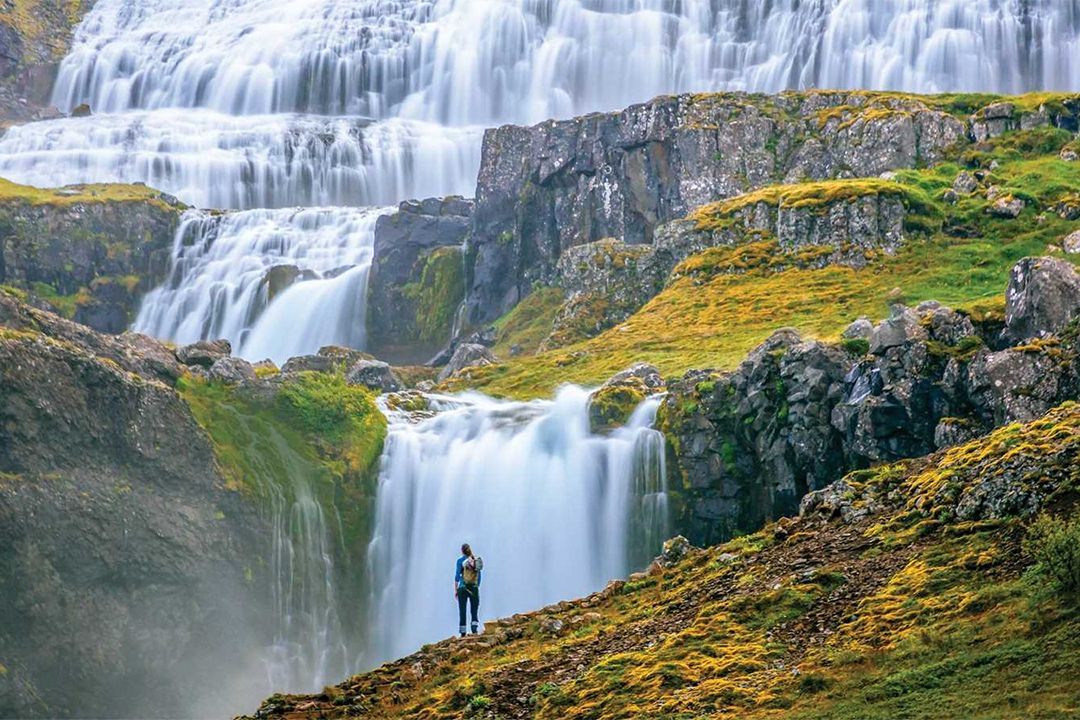Iceland
A land of captivating contrasts and breathtaking natural beauty, the "Land of Fire and Ice" is a remarkable island offering a unique blend of fiery volcanoes, majestic glaciers, and stunning scenery. From dramatic waterfalls and black sand beaches to the rugged highlands and serene fjords, Iceland promises unforgettable experiences that showcase the raw power of nature.
Reykjavik
Reykjavik, Iceland's vibrant capital, serves as the gateway to the country’s stunning natural wonders. It offers a captivating blend of rich history and contemporary culture. The city features picturesque streets adorned with colorful houses, remarkable modern architecture, and a lively arts scene that thrives year-round. Visitors can indulge in a variety of activities, from sampling delicious Icelandic cuisine to exploring local boutiques and galleries.
The city also offers a culinary scene that celebrates traditional Icelandic cuisine and innovative gastronomy. It features a diverse array of restaurants, cozy cafés, and bustling food markets. As night falls, the city transforms into a vibrant entertainment hub. Trendy bars and pubs line the streets, creating an inviting atmosphere to enjoy craft cocktails, local beers, and a lively nightlife scene, including intimate wine bars, energetic dance clubs, and live music venues showcasing everything from jazz to Icelandic indie rock.
South Iceland
A breathtaking region that exemplifies the raw beauty and diverse landscapes of Iceland, from its dramatic volcanic terrain and sprawling glaciers to tranquil villages and stunning coastlines. Home to some of the country’s most iconic landmarks, including the majestic Seljalandsfoss and Skogafoss waterfalls, the black sand beaches of Vik, and the awe-inspiring Vatnajökull National Park, which features Europe’s largest glacier, this region offers abundant opportunities for outdoor activities such as hiking, glacier walking, and exploring the rugged highlands. The area is steeped in history and folklore, with charming towns like Hveragerði and Selfoss providing a glimpse into Icelandic culture and traditions. As you travel along the scenic South Coast, prepare to be captivated by the stunning vistas and ever-changing landscapes, making each stop an unforgettable experience.
East Iceland
East Iceland's unique blend of dramatic scenery and peaceful ambiance invites travelers to immerse themselves in the stunning natural beauty of Iceland. As you wander through the charming towns of Seydisfjördur and Egilsstaðir, you will discover a rich tapestry of culture, art, and tradition, where colorful houses line the streets, and local artisans showcase their talents. Borgarfjörður Eystri is an excellent place to get close to puffins and serves as a springboard to one of the best-developed hiking and riding areas in the country, known as Víknaslóðir, or Trails of the Deserted Inlets. The region is also a haven for outdoor enthusiasts, offering opportunities to hike and explore the surreal landscapes of the eastern section of the vast Vatnajökull National Park, including the volcanically, geothermally, and glacially active Kverkfjöll mountains, the Hvannalindir spring-fed oasis, the ancient, towering volcano of Snæfell, and the Eyjabakkar haven for reindeer and pink-footed geese.
North Iceland
Surrounded by mountains and the icy vista of the Arctic Circle, North Iceland offers an experience of raw beauty and rich cultural heritage that thrives in its towns and landscapes. The region is home to iconic sites such as Lake Mývatn, where you can enjoy unique geological formations, soothing hot springs, and abundant birdlife, making it a perfect spot for nature lovers. Akureyri, the charming capital of the North, boasts a lively arts scene, cozy cafes, and inviting shops. The impressive waterfalls, Godafoss and Dettifoss, known for their breathtaking beauty and sheer power, are nearby. Opportunities abound for whale watching off the coast of Húsavík, one of the best spots in the world to see these magnificent creatures up close.
West Fjords
The West Fjords, a rugged and remote paradise in Iceland, showcase some of the country's most breathtaking natural beauty. Known for their dramatic cliffs, deep fjords, and unspoiled landscapes, this region is perfect for those seeking adventure off the beaten path. The charming village of Ísafjörður serves as the gateway to the region, where visitors can explore quaint streets lined with colorful wooden houses and indulge in local cuisine. The West Fjords are home to the Látrabjarg cliffs, renowned for their puffin colonies and stunning seabird views.
West Iceland
A perfect blend of natural beauty, rich history, and vibrant culture, West Iceland serves as a gateway to some of the country’s most iconic attractions. It is home to Snæfellsjökull National Park, featuring Snæfellsjökull volcano capped by a glacier, regarded as one of the symbols of Iceland, the Snæfellsnes Peninsula, and the striking landscapes of Borgarfjörður, where lush valleys meet powerful waterfalls. Discover the fascinating world of geothermal activity at the famous Deildartunguhver hot spring or relax in the soothing waters of the Krauma Spa, where stunning views of the surrounding countryside await.
Reykjanes
On Iceland's southwestern tip, Reykjanes is known for its rugged landscape featuring lava fields, bubbling mud pools, and steaming fumaroles. At the heart of Reykjanes lies the famous Blue Lagoon, a world-renowned geothermal spa where visitors can relax in the mineral-rich waters surrounded by black lava fields. The mystical ambiance of this iconic destination makes it a must-visit spot in Iceland for rejuvenation. Beyond the Blue Lagoon, Reykjanes offers various opportunities for hiking, exploring hidden caves, birdwatching along its rugged shores, and discovering rich historical sites, including ancient church ruins and remnants of Viking heritage.
Central Highlands
Renowned for its dramatic landscapes, towering mountains, vast volcanic plateaus, and sparkling glacial lakes, the Central Highlands offer a thrilling escape for adventurous travelers- one of Europe’s last great wilderness areas. This region is characterized by striking contrasts: a blend of colorful rhyolite mountains, desolate desert-like plains, and lush valleys adorned with vibrant wildflowers during the summer months. A paradise for hikers and outdoor enthusiasts, it boasts some of Iceland’s most iconic trekking routes, including the famed Laugavegur Trail, which guides adventurers through surreal landscapes of geothermal springs, glaciers, and stunning waterfalls. The Central Highlands also provide an incredible opportunity for stargazing, as the remote location and lack of light pollution reveal breathtaking views of the night sky.
When To Go
The best time to travel to Iceland for tourism depends on the experiences you seek. The summer months of June to August mark the peak season, with visitors eager to explore Iceland’s stunning landscapes in milder weather. The days are long, making them perfect for hiking, camping, and enjoying the vibrant flora. From September to October, autumn offers a beautiful transition as the landscapes transform with fall colors. Winter, from November to March, is ideal for those pursuing winter sports and those wishing to catch the Northern Lights. Although the weather can be colder and more unpredictable, the magical winter landscapes, ice caves, and the Blue Lagoon’s geothermal waters provide a unique experience. Daylight hours are shorter during this time, offering only a few hours of sunlight each day, especially in December. From April to May, spring rejuvenates the landscape as flowers bloom and wildlife becomes more active. This period is great for hiking and enjoying fewer crowds.
Travel Options
There are multiple options for exploring Iceland. Popular choices include self-driving tours, coach excursions, and cruise journeys. Driving around Iceland is one way to explore the country. The road system is extensive and easy to navigate. Highway Number 1, commonly known as the Ring Road, is the most traveled route circling the country, providing access to many side trips. The Ring Road is open year-round, although weather conditions can temporarily close certain sections during winter and occasionally in summer. Most of the main roads are paved, but there are some stretches of loose gravel, especially in mountainous or farming areas in the interior. The country's rugged landscape and unpredictable weather create challenges for even the most experienced drivers, so it is crucial to drive cautiously and be well-prepared before setting out on the journey, as well as to check current conditions. Coach tours provide a comfortable option for those who prefer not to do the driving on their own. Small ship cruises departing from Reykjavik either circle the island entirely or make a partial loop before returning to Reykjavik.








